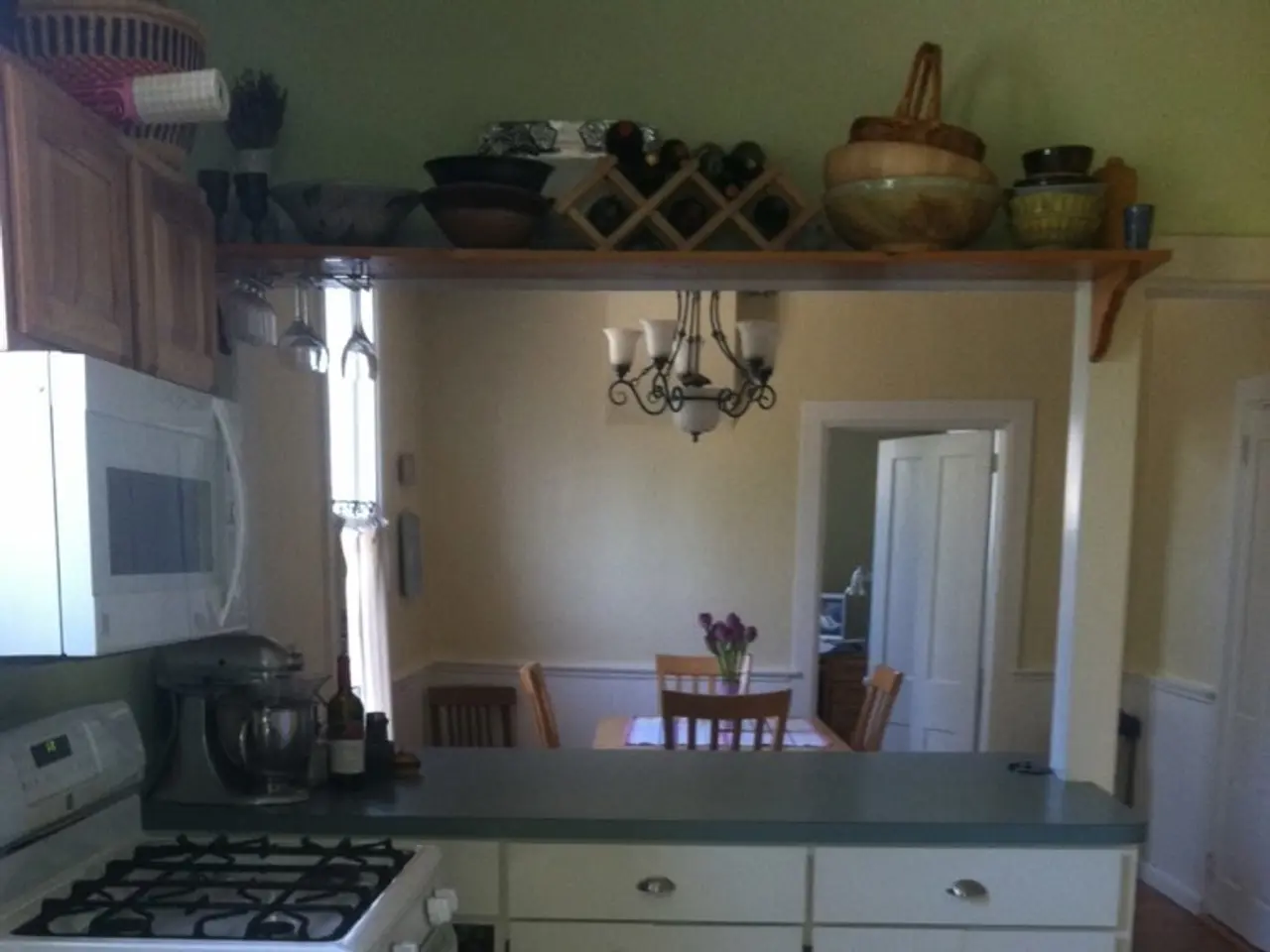Latest Kitchen Design Developments for 2025 That Carry Significance for Your Residence
In the year 2025, kitchen design trends are shifting towards a more functional, sustainable, and personalized approach. Here are some key trends that are shaping the kitchens of tomorrow:
1. Functional Storage and Smart Organization
Customized storage solutions are at the forefront of kitchen design in 2025. Pull-out pantry systems, drawer organizers, appliance garages, and built-in spice racks are becoming increasingly popular. Floor-to-ceiling cabinetry and multifunctional kitchen islands with hidden storage maximize usability and accessibility.
2. Sustainability and Eco-Friendly Materials
Homeowners are showing a growing preference for sustainable materials like reclaimed wood, bamboo, recycled quartz, composite surfaces, and terrazzo made from reclaimed stone chips. Low-VOC finishes and energy-efficient lighting and appliances are common to reduce environmental impact while maintaining style.
3. Smart Kitchen Technologies Integrated for Convenience
Smart kitchen technologies are becoming more integrated and useful. Features such as touchless faucets, motion-sensor and app-controlled lighting, built-in charging stations, smart storage with automated openings, and touch-activated LED lighting in countertops enhance functionality and energy efficiency.
4. Natural and Warm Aesthetic with Personalized Touches
Natural wood cabinetry in white oak, walnut, and other warm woods is popular, emphasizing organic textures and visual comfort. Earthy tones—deep green, forest green, clay, terracotta—are favored for cabinetry colors, often combined with lighter hues to balance visual interest while reflecting personal style.
5. Material and Texture Combinations
Mixing materials such as quartz with natural wood butcher blocks or granite islands with quartz perimeters is a rising trend, allowing homeowners to customize textures and contrasts that reflect their personality and lifestyle.
6. Minimalist and Sleek Designs Enhancing Usability
Clean lines, clutter-free surfaces, and minimalist storage solutions paired with sculptural lighting create efficient, elegant spaces that are easy to live in and maintain.
Other trends include the use of banquette seating to maximize seating capacity in smaller kitchens, offering storage beneath seats. Smart storage solutions are becoming more intelligent and efficient, including vertical storage solutions, pull-out and pull-down mechanisms, integrated appliance garages, and drawer systems.
The movement towards warmth extends to lighting choices, with homeowners selecting fixtures that cast warm, golden light. Flexible furniture choices include pieces that serve multiple functions, like storage ottomans and carts. Personalized design elements include custom details, cultural influences, hobby integration, art and collection display areas, vintage and heirloom incorporation, and custom storage solutions.
Multi-functional kitchen islands are evolving to become command centers that serve multiple functions, including tiered designs, integrated seating solutions, hidden storage, flexible workspace design, and secondary sink installations. Kid-friendly design elements include durable materials, appropriate heights for children, and designated spaces for school supplies and activities.
The most successful trend implementation focuses on elements that genuinely improve daily life, prioritize longevity, consider function over pure aesthetics, and test trends through temporary implementations before committing to permanent installations. These trends are not just about creating stylish kitchens, but about designing spaces that are functional, sustainable, and personalized to the homeowner's needs and preferences.
- In 2025, dishwashers and refrigerators, integrated within the home and kitchen, are embracing energy efficiency to reduce environmental impact.
- The kitchen, a pivotal part of modern living, is transforming with technology, featuring smartwashers and cookings appliances that speed up tasks and enhance personal growth through education-and-self-development.
- The trend toward functionality is also evident in the kitchen's organization, as appliance garages and pull-out pantry systems efficiently store and manage cooking essentials.
- The choice of materials and textures in the home-and-garden sector leans toward sustainability-living, with reclaimed wood, bamboo, and recycled quartz becoming common to maintain quality while promoting sustainable-living.
- Homeowners are personalizing their kitchens with style, from natural wood cabinetry in various warm tones to mix-and-match material and texture combinations that reflect their unique lifestyle.
- Smart home technologies are increasingly being integrated into the kitchen, with touchless faucets, motion-sensor lighting, and app-controlled devices streamlining daily chores and promoting personal growth.
- A key trend in the kitchen is the embrace of a minimalist, sleek design that maximizes usability and functionality, with minimalist storage solutions, clean lines, clutter-free surfaces, and sculptural lighting accentuating this aesthetic.
- Lifestyle choices are guiding kitchen design, from multifunctional kitchen islands doubling as command centers to kid-friendly designs featuring durable materials and designated spaces for children.
- Homeowners are mindful of sustainability when making design decisions, prioritizing longevity and functionality over pure aesthetics, ensuring the kitchen is both beautiful and practical for years to come.




